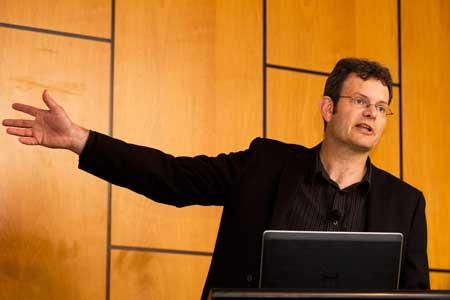Minister of Building and Construction Maurice Williamson expressed confidence in New Zealand’s structural steel industry as he opened a forum held in Christchurch on 29 February 2012. Forum organiser Alistair Fussell of Steel Construction New Zealand said the event’s central theme was seismic resilience. “The design and construction of Christchurch’s new buildings and infrastructure will be heavily influenced by seismic considerations. What the event aimed to demonstrate was that structural steel buildings can withstand even major earthquakes, offer commercial advantages over alternative options, and are architecturally attractive,” Mr Fussell said.
A presentation by Associate Professor Charles Clifton of the University of Auckland discussed the development of new ‘low-damage, seismic-resisting’ steel-framing systems. “One of the key economic lessons to come out of the Canterbury earthquakes has been the importance of minimising building damage during earthquakes,” said Mr Fussell. “New Zealand researchers such as Dr Clifton, and Dr Greg MacRae of the University of Canterbury, are world leaders in this innovative steel-framing technology which allows buildings to effectively self-centre following an earthquake, resulting in little or no structural damage.” To date over $3 billion of steel building construction has been undertaken in New Zealand featuring low-damage, steel seismic-resisting systems.
Richard McGowan of architects Warren and Mahoney presented the past, present and future of Christchurch architecture. “Our much-loved heritage buildings were designed with substance in mind,” said Mr McGowan. “Given the need for seismic resilient buildings, it’s likely we will see new designs which sit lightly on the land. Steel’s qualities, including precision, lightness and dynamism, therefore make it a good option.”
The 100 invited guests also discussed the merits of a seismic rating system for buildings, an idea proposed by Christchurch lawyer Don Holden. “Tenants, owners and insurers need to be able to understand how safe a building will be in an earthquake, so the idea of a ‘quake star’ rating system has a lot of merit. Given the proven performance of steel-framed buildings in the earthquakes – HSBC Tower and Pacific Tower, for example – and the new emerging low-damage technology, we fully support the concept,” said Mr Fussell.
Minister Williamson expressed his confidence in the innovation, quality and capacity of today’s modern steel industry. “I commend the steel industry for the advances it has made and will watch with interest as they seek to make a valuable contribution to a new Christchurch CBD,” said the Minister.
Mr Fussell said while steel is a leading structural solution in New Zealand, with about 50 percent market share, it is not so common in Christchurch. “With the Central City Plan currently with the Government for approval, now’s a good time to be talking to the city’s property professionals about the technical, commercial and design merits of New Zealand manufactured and fabricated structural steel.”

Seismic resilience key to new Christchurch CBD: steel industry
Sunday, 04 March 2012


